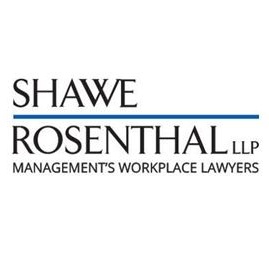TOP TIP: Masks/Face Coverings in the Workplace Uncovered! What Can Employers Require?
As offices and other workplaces reopen, employers are struggling with the issue of masks and face coverings in the workplace. There has been much confusion about whether and when cloth face coverings are required, and what are an employer’s obligations with regard to their use.
There is a distinction between cloth face coverings, surgical masks, and respirators. The Occupational Safety and Health Administration recently issued FAQs to clarify this, as we discussed in detail in our blog post, “OSHA Speaks: Face Coverings, Masks and Respirators – Oh My!” To briefly reiterate the key points about face coverings, they are used to contain potentially infectious respiratory droplets produced when talking, sneezing and coughing. They do not protect the wearer from infection, are not considered personal protective equipment (PPE), and are not an adequate substitute for PPE (where PPE is required after an employer conducts a hazard assessment). They may be homemade or commercially manufactured, and may be disposable or reusable (after washing/cleaning).
Surgical masks, on the other hand, are typically FDA-cleared as a medical device. They can be used to contain respiratory droplets to prevent the spread of COVID-19. They can protect workers against potentially infectious splashes and sprays (although not airborne transmissible infectious agents). If they are used for this protective purpose, they are PPE; if they are used simply to contain respiratory droplets, they are not PPE.
The CDC is recommending the universal use of cloth face coverings in public in order to slow the spread of COVID-19 and, to the extent that surgical masks are becoming more available, they may also be used for this purpose. Many state and local jurisdictions have mandated the use of face coverings in certain businesses, like retail and food service. But such orders typically do not apply to other private workplaces.
Consequently, for these employers, the use of face coverings is left to their discretion. This use is a scientifically-supported best practice to reduce or prevent the spread of infection – and arguably may even be considered part of an employer’s obligation to provide a safe workplace under OSHA’s general duty clause – but there are different levels of use that may be required:
- All employees may be required to wear face coverings or masks at all times within the office.
- All employees may be required to wear face coverings or masks only if they will be within 6 feet of any other person while in the workplace, whether in a communal area or private office. (Note that this option does not prevent the spread of the virus to surfaces).
- All employees may be required to wear face coverings/masks if they are walking through or working in communal areas of the workplace (entrances, hallways, conference rooms, break rooms, rest rooms, etc.) or are within 6 feet of anyone else. If they are alone in an enclosed private office, they could remove the face coverings/masks to work.
There may be situations in which employers would need to make exceptions to any face covering requirement. One is if the face covering poses a hazard to the employee during the performance of a particular task – such as potentially being caught in machinery, trapping dangerous chemicals, or interfering with the use of required PPE. Another is if the employee has a disability that prevents them from wearing a face covering – in which case the employer must engage in the interactive process under the Americans with Disabilities Act to determine if a reasonable accommodation can be made. Similarly, an employee may make a request not to wear a face covering for religious reasons, which would trigger the interactive process under Title VII. Whether or not an employer would have to excuse an employee from wearing a mask as a reasonable accommodation would depend on the circumstances and the outcome of the interactive process.
Employers may wish to consider providing the face coverings/masks, but do not have to, except in states where employers are required to reimburse all business expenses (like California and Illinois, among others). But it may be wise to do so to reinforce the employer’s commitment to a safe workplace, to encourage the use of face coverings/masks, and for purposes of employee morale.
If employers choose to require the use of face coverings in the workplace, they should instruct employees on how to wear the face coverings/masks (i.e. over the nose and mouth). Unfortunately, many people do not seem to understand how the face covering should be worn. The instruction doesn’t have to be a formal, in-person training. Written directions or, better yet, a graphic is sufficient. (A formal “training” is only required for respirators such as N95 masks, which are not at issue here.) The CDC has provided a poster on this topic, which may be displayed throughout the workplace: https://www.cdc.gov/coronavirus/2019-ncov/downloads/cloth-face-covering.pdf.







